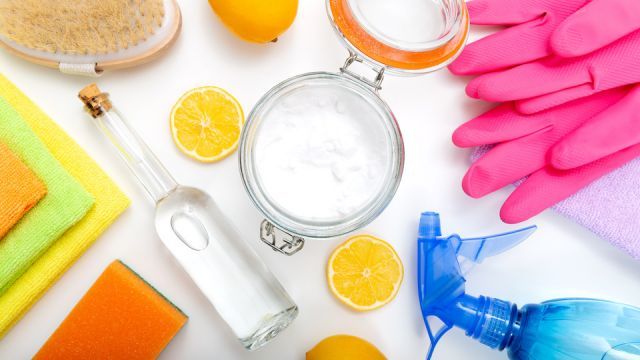
We all know the old saying: honey catches more flies than vinegar. Although this is a great way to live your life, maintaining a positive attitude, don’t take it too literally. After all, vinegar is easily one of the best products for your health and home.
We are learning more and more each and every day, especially in terms of the products we’re using. From harsh soaps to chemically-laced sprays, the air pollution within our homes can be rather shocking. Could vinegar be your saving grace?
Cleaning products and indoor air quality
Before we dive into the many uses of vinegar, I just want to focus on a couple of interesting studies. Being human beings, we’re prone to only thinking about what we can see. Take your skin, for example. There are currently millions of bacteria living on the surface of your body — but we don’t think about them because we can’t see them.
The same is true for all the “garbage” within our air. Toxic chemicals are often sprayed inside our homes. And if you think they just disappear, you’re in for an unfortunate shock. Within one Canadian-based study, conducted by Environmental Defence, researchers tested the air quality after participants used cleaning products for 30 minutes. Participants used a range of products, mimicking the average cleaning experience — after all, most people do not stick to one brand.
Researchers found that all products led to higher concentrations of volatile organic compounds (VOCs). In one Montreal apartment, the air transformed after using conventional cleaning products for half an hour. First, the air contained 1,200 micrograms of VOCs per cubic meter. But, after cleaning, researchers detected 2,000 micrograms of VOCs. Since we spend so much time indoors, this is a major concern.
Based on another study, published in Environmental Health Perspectives, researchers stated that scented consumer goods emit more than 100 different VOCs. These include all-purpose cleaners, detergents, air fresheners, and other common products. Some are classified as both hazardous and toxic by the federal government.
What’s important about this study is that even products that were labeled green, natural, or organic emitted these harmful compounds. Of the 25 products tested, 44% produced at least one of the 24 carcinogenic air pollutants — such as formaldehyde. Within both studies, the researchers recommend a more natural solution, comprised of baking soda and vinegar.
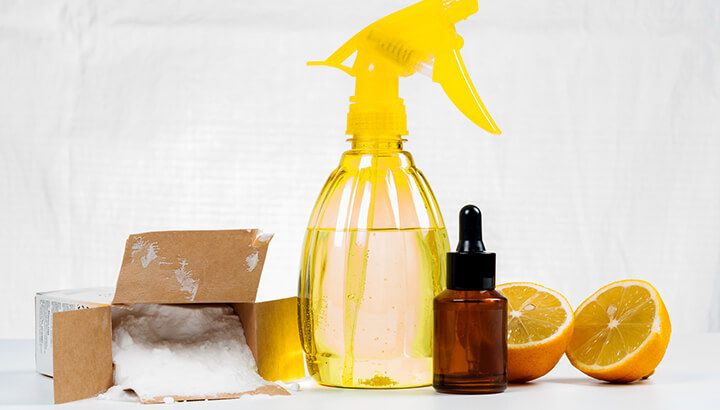
As stated by David Suzuki, a Canadian academic and environmental activist, acetic acid (or white vinegar) is a great disinfectant within the home. It can cut through grease and even deodorize.
Without the need for toxic additives, this all-natural solution can even combat harmful bacteria, such as E. coli or salmonella. The high acidity in vinegar can pass through the cell membranes of bacteria, essentially causing the cells to die. Although the standard vinegar bottles contain around five percent acetic acid, health stores will often offer options as high as 12 percent, boosting its cleaning strength.
Are you ready to benefit from a bit of vinegar and elbow grease? Here’s how you can use it in your home:
In the garden
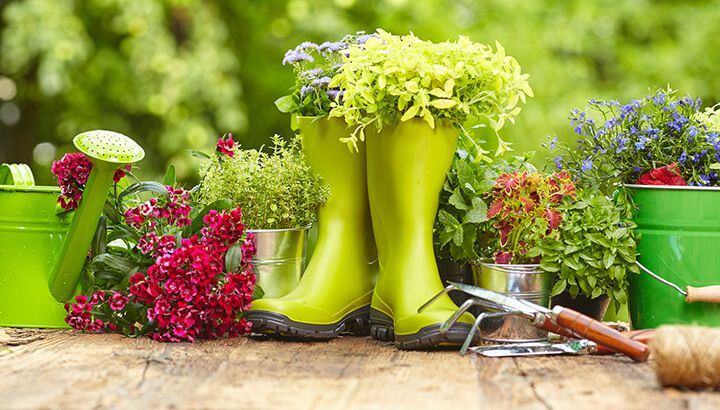
1. Enhance the longevity of flowers. No need for synthetic plant food, just dilute a bit of sugar and vinegar in water. You’ll want to add about 1 tablespoon of vinegar to a pint of water. The sugar will nourish the flowers, while vinegar fights off bacteria.
2. Improve your soil. There are plenty of areas throughout North America where the water is extremely hard. This leads to water that has a higher pH, or water that is more alkaline, affecting the soil. Test your soil, and if it’s too alkaline, add a touch of vinegar. This is especially beneficial for plants such as gardenias or azaleas.
3. Kill weeds. Use a spray bottle with vinegar on your walkways.
4. Get rid of skunk odor. If your cat or dog has been sprayed, wash them with vinegar and then thoroughly rinse.
5. Clean your mower blades. When your mower blades are full of grass stains, soak a cloth in white vinegar and carefully wipe each blade. Do this after each use, before placing your mower back into the garage or shed.
6. Repel ants. If ants are finding their way into your home, spray vinegar around the outside door frame and windows. The same goes for fleas!
FREE BOOK: Discover 81 AMAZING ways to use Apple Cider Vinegar => Click here
7. Clean patio furniture. Fight mildew on outdoor furniture with a vinegar solution.
8. Give seeds a head start. Lightly rub seeds such as passionflower or gourds with sandpaper, then soak in a solution of water and apple cider vinegar.
9. Stop the yellowing of leaves. If your hydrangeas and azaleas start to yellow, you may need to adjust the pH. Once a week, apply this solution: 1 quart of water and 2 tablespoons of apple cider vinegar. Repeat for three to four weeks.
10. Deter pets and animals. Whether you have a dog or a raccoon that keeps trekking through your vegetables, place vinegar-soaked rags on stakes around the garden. Re-soak every 10 days or so.
11. Clean up bird droppings. Stubborn bird droppings can be cleaned away more easily with full-strength vinegar. Just spray on, leave for 30 minutes, then wash away.
Pet-related cleaning and care

12. Eliminate pee stains. After blotting and flushing the area with warm water, apply a diluted solution of vinegar and water, rinse, and allow to dry.
13. Clean their ears. Dab a cloth in 2 parts vinegar and 1 part water — then clean gently. If there are any lacerations, do not use this method and seek the assistance of your vet.
14. Clean your fish tank. If you have yucky deposits that have formed in your fishbowl, you can clean it with vinegar. Just be sure to rinse properly and achieve an optimal pH before introducing new fish.
15. Neutralize pet odors. If your carpet smells of pet odors, sprinkle baking soda over the area and let it rest overnight. Vacuum and then apply vinegar before rinsing.
16. Freshen your kitty litter box. Once you empty your kitty litter, pour in vinegar, covering the entire surface. Allow it to soak for 30 minutes before rinsing well — cats do not like the smell of vinegar.
17. Deter chewing. Is your dog chewing on electrical cords? Apply a small amount of apple cider vinegar on the external insulation. Only do so when the cord is unplugged!
18. Clean your birdbath. If you enjoy your wild “pets” that fly in each morning, be sure to give their bath a thorough vinegar cleaning every once in a while.
19. Condition your dog’s hair. Dab with apple cider vinegar to remove soap residues and improve flaky skin. Not only will this condition the hair, but it will also repel pesky insects, including fleas and ticks.
In the garage and your car
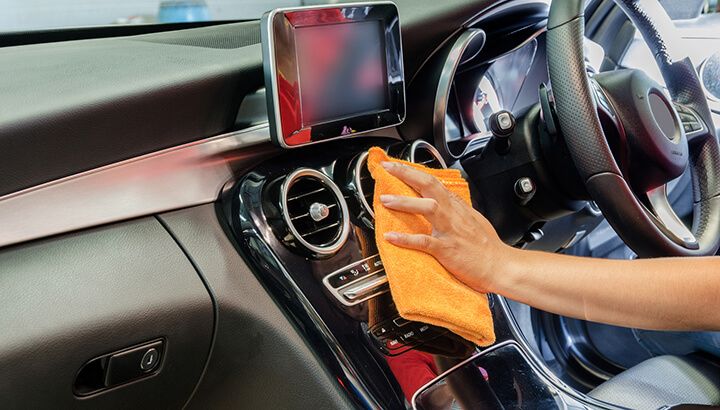
20. Reduce frost by coating your car window. If you live somewhere that experiences harsh winters, applying a thin layer of vinegar on the window can prevent frost.
21. Polish chrome. Quickly and easily remove deposits from chrome.
22. Remove rust. If your tools or bolts are rusted, soak them in vinegar overnight.
23. Clean concrete floor. If you have rust spots on the floor, clean with white vinegar and lemon.
24. Revive paintbrushes. If you have a bucket of brushes that are headed for the garbage, first soak them in vinegar. If the paint has really hardened, boil in 1 to 2 cups of vinegar before washing with hot, soapy water.
25. Release stubborn screws. If a screw or hinge is rusted, apply vinegar to a cloth, rub and then re-try.
26. Clean up after mice. If you find mouse poop in your garage, be sure to disinfect with vinegar. It will also deter other mice from making this space their home.
27. Scrub your car’s carpet. The same rules apply in your car as they do in your home.
28. Clean your car’s upholstery. When the weather is nice, combine warm water, all-natural detergent and 1/4 cup of vinegar. Spray problematic areas and leave on for five to 10 minutes. If there are stains, first gently apply a baking soda and water paste, then apply the vinegar solution.
29. Eliminate odors. If your car is stinky, place a bowl of vinegar on the dash. Close all the windows and leave overnight.
30. Remove bumper stickers. After you have peeled away the sticker, apply a solution of olive oil and vinegar. Allow it to sit for five minutes and then clean away the adhesive.
31. Clean wiper blades. If you’re getting streaks on your window, it’s time to clean the blades. After soaking a cloth in vinegar, wipe the blades down.
In the bathroom
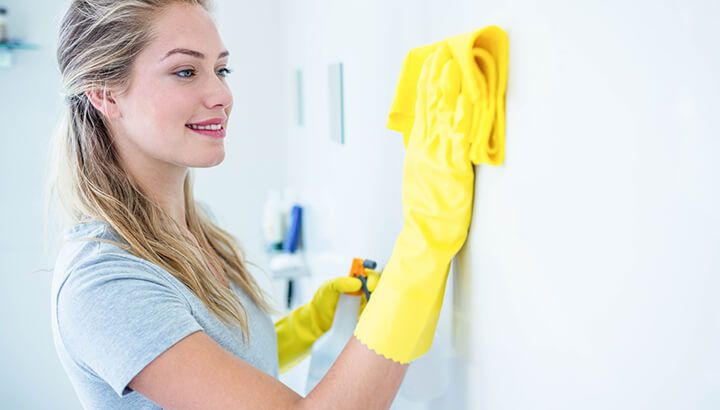
32. Wipe mildew. For heavy mildew, use undiluted vinegar.
33. Renew your loofah. For 24 hours, soak your loofah in equal parts vinegar and water.
34. Disinfect fixtures. Kill germs by spraying fixtures with a solution that’s 1 part water and 1 part vinegar.
35. Unclog shower head. Unscrew, remove the rubber washer and simmer in a pot that contains equal parts vinegar and water.
36. Clean the tub. If you have hard-to-remove stains, pour 4 cups of vinegar into your tub and fill with warm water. Allow the full tub to rest for three to four hours before draining and re-cleaning.
FREE BOOK: Discover 81 AMAZING ways to use Apple Cider Vinegar => Click here
37. Make your shower doors shine. To remove water spots, wipe down with a combination of baking soda, vinegar, and warm water.
38. Wash out your toothbrush cup. Treat cups and toothbrush holders with vinegar to eliminate any built-up scum. Fill with equal parts water and vinegar, then leave overnight.
39. Disinfect toilet. Pour one cup of vinegar into your toilet bowl and allow it to sit overnight.
40. Clean shower door tracks. Pour full-strength vinegar into the track and allow to sit for three hours, then flush. You can also get in there with a toothbrush.
In the laundry room
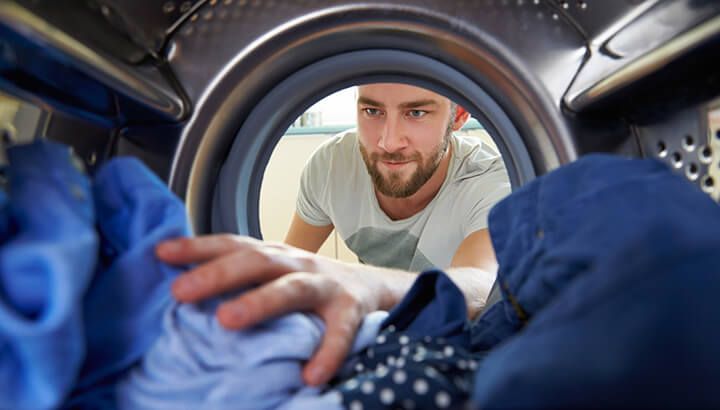
41. Brighten fabric. Avoid chemical products and brighten colors with vinegar. Add 1/2 cup to your machine’s rinse cycle.
42. Repel lint. When vinegar is used during your laundry cycle, it can prevent lint from sticking to clothing.
43. Whiten dingy socks. Combine hot water and vinegar in a bucket and soak your socks overnight. Wash the following day as you normally would.
44. Unclog hoses. Once a month, pour one to two cups of vinegar into your washing machine and run a cycle without any clothes. This can help unclog hoses and reduce soap scum.
45. Ensure colors don’t run. If you want to prevent colors from running, soak your clothes in a vinegar solution before washing.
46. Remove stains. If you have deodorant stains on your clothes, wipe with vinegar before washing.
47. Remove even those stubborn stains. The same goes for fruit or coffee stains.
48. Remove odors. If you were around someone smoking, remove these odors with vinegar.
49. Improve cotton and wool quality. If you want your blankets to be fluffier, add 1 cup of vinegar to the rinse cycle.
50. Eliminate grease. If you got grease on a material such as suede, dab with vinegar before washing as directed.
51. Expand longevity of nylon. Add vinegar to your washing machine to increase the longevity of your nylon pantyhose.
52. Unclog your steam iron. Pour a 1:1 solution of vinegar and water into your iron’s water chamber. Turn on and allow it to sit within its upward resting position for 10 minutes, before turning off to cool. Change the water to eliminate loosened particles and deposits.
In the office

53. Clean office supplies. From your printer to your fax machine, these items tend to get dusty. Spray bottles can damage equipment, so make a diluted vinegar solution and dampen a cloth to wipe.
54. Clean your keyboard. To get into tight spaces, such as those between your keys, dip a Q-tip in your vinegar solution.
55. Erase pen. Did your charming young child write on your desk or wall? Vinegar will help remove these marks.
56. Unstick your scissors. When scissor blades become sticky or rusty, a vinegar-soaked cloth will do the trick.
57. Brighten up your space. Are your office windows dirtier than you’d like? Take a lint-free cloth and wipe with a lemon-vinegar solution.
In the living room
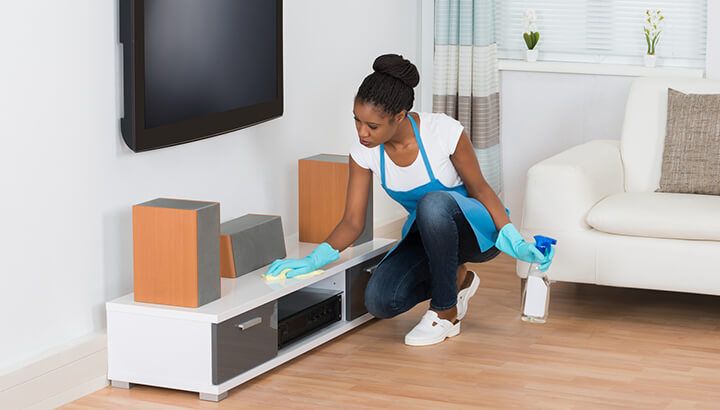
58. Wipe your blinds. Once the sunlight hits your blinds, are you blinded by dust? Create a diluted vinegar solution, put on a cotton glove and go to work. As you slide your fingers across, you’ll collect all that unwanted dust and debris.
59. Eliminate water rings. If there are ring marks on wood furniture, combine olive oil and vinegar, then apply with a soft cloth.
60. Clean piano keys. Make those keys sparkle by applying a bit of vinegar.
61. Remove carpet stains. Combine salt and vinegar, apply to your carpet and let the solution dry. Lastly, vacuum the area.
62. Bring rugs back to life. Dilute vinegar with water, then clean rugs with a push broom dipped in the vinegar solution.
63. Brighten any brickwork. Have a brick fireplace? Combine one cup of vinegar in a small bucket of water, then wipe each brick to brighten.
64. Revamp wood paneling. Combine water (1 pint), vinegar (3 to 4 tablespoons) and olive oil (2 tablespoons), then apply with a clean cloth. After it soaks in, polish with a dry cloth.
65. Hide scratches on wood flooring. Whether your tabletop or floor is scratched, combine vinegar and iodine, then paint over the area with a small paintbrush. The shade will determine the increments — use more iodine for darker woods.
66. Restore leather furniture. Combine vinegar and linseed oil, then spread on with a clean cloth. After two to three minutes, wipe with a dry cloth.
67. Clean up candle wax. First, blow-dry the area, then wipe away with paper towels — before cleaning the “aftermath” with diluted vinegar.
In the kitchen
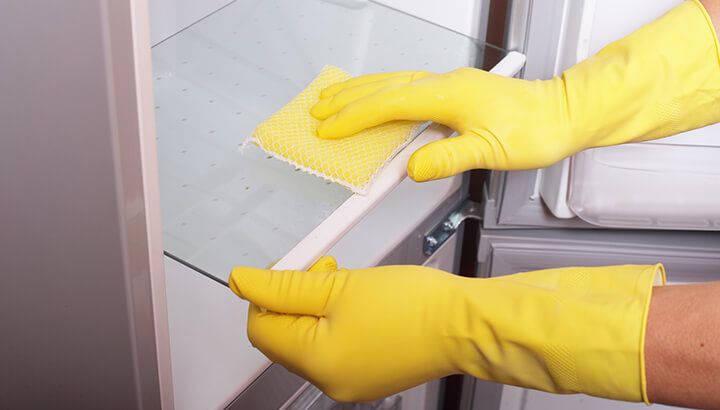
68. Unclog drains. Flush with hot water, then funnel 1/2 cup baking soda, followed by 1 cup vinegar.
69. Deodorize the sink. Use the same approach for unclogging your drain to also deodorize.
70. Clean stainless steel. Spritz with vinegar and buff with a cloth.
71. Eliminate burnt or smoke odors. Like your car, place a bowl of vinegar in your kitchen. This will eliminate the smell of cigarettes and burnt food.
72. Refresh your fridge. Clean the interior of your fridge with diluted vinegar, then wipe with full-strength vinegar to prevent the growth of mildew.
73. Clean the microwave. Place a bowl with vinegar and water in the microwave, then heat. Once cooled down, wipe down the interior with a cloth.
74. Freshen up lunch boxes. Place a vinegar-soaked sponge into your child’s lunch box, and leave it overnight before rinsing.
75. Polish silver, brass and copper. Make a paste using vinegar and baking soda, to clean silverware or any items made of brass and copper.
FREE BOOK: Discover 81 AMAZING ways to use Apple Cider Vinegar => Click here
76. Disinfect cutting boards. Sprinkle baking soda on the cutting board’s surface, then spray with undiluted vinegar. After 10 minutes, wipe with a damp, clean cloth.
77. Clean ice cube trays. Pour vinegar into the tray, and allow to sit for three hours before rinsing.
78. Freshen veggies. Soak wilted vegetables in 3 cups of water with 1 tablespoon vinegar.
79. Clean coffeemaker. Run a solution that is 2 parts vinegar and 1 part water through your coffee maker. This is recommended after every 50 cycles or so.
80. Can the tap. Have hard water stains on your tap? Soak a cloth in vinegar and drape it over the faucet.
81. Debug vegetables. Before consuming fresh vegetables, soak in a bowl of water, vinegar, and salt — the bugs will float to the top.
82. Clean oven grease. Wipe with a cloth that has been moistened with vinegar and water.
83. Clean your dishwasher. Run 1 to 2 cups of vinegar through your dishwasher once a month.
84. Make your glassware sparkle. When drinking glasses have hard water spots, soak them in equal parts vinegar and water for 30 minutes. Clean with a bottle brush, then rinse clean.
85. Descale your kettle. Boil 4 cups of vinegar, then allow it to sit overnight. Drain and rinse thoroughly the following day.
86. Scrub pots and pans. Combine equal parts flour and salt, and then just enough vinegar to make a paste. Scrub and rinse.
87. Sanitize glass jars. Whenever you can, reuse jars and containers. If you don’t like the fact that there was food in the jars previously, fill with equal parts vinegar and hot water. Allow it to sit for 20 minutes before giving it a thorough clean and rinse.
88. Eliminate bugs from your pantry. Place a small bowl of vinegar in your pantry, and then add a couple of drops of peppermint essential oil. This will attract bugs. After a week, discard this solution, then clean all shelves thoroughly with diluted vinegar.
89. Clean a rusty can opener. Vinegar will help cut through rust, so wipe clean!
Other uses for vinegar
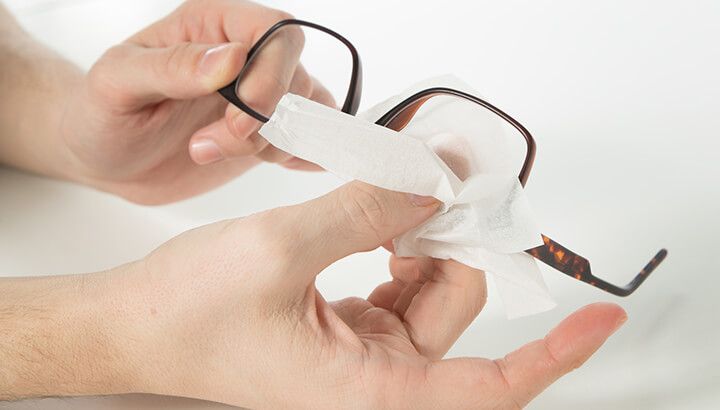
90. Peel off wallpaper. Spray stubborn wallpaper with equal parts water and vinegar, then scrape away.
91. Then eliminate paste. Make a slightly stronger solution to remove both new and old wallpaper paste.
92. Slow the hardening of plaster. When mixing plaster, add a couple of splashes of white vinegar to give you extra time.
93. Get concrete off your skin. If you’re fixing up your home, and get concrete on your skin, use undiluted vinegar to wash away dry concrete, followed by warm soapy water.
94. Spritz around your pool. If you want to keep flies and insects out of your pool, spray the perimeter with vinegar.
95. Remove calcium. Anywhere you have calcium deposits, vinegar will do the trick. The same is true with lime.
96. Reduce soap bubbles. Have a steam cleaner? Use some vinegar within the cleaner to reduce bubbling and enhance cleaning strength.
97. Soak wicks. If you burn propane lanterns, soak wick for several hours and then allow to dry. This will help them burn brighter and longer.
98. Reduce dust on plastic. If you have a large area of plastic, wipe it down with vinegar. This will make it anti-static and reduce the accumulation of dust.
99. Loosen glue. If there’s old, hard glue on the joints of tables or chairs, apply vinegar.
100. Clean your glasses. Use a drop of vinegar to naturally clean your glasses.
101. Restore bags and shoes. If your leather items are scuffed, wipe with vinegar.
-The Alternative Daily

